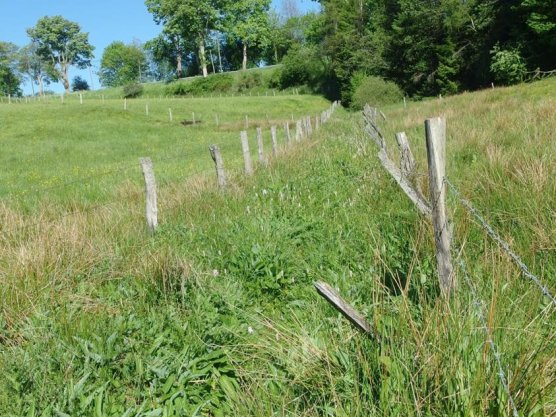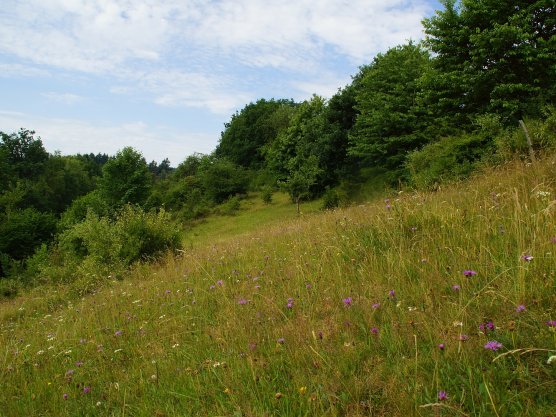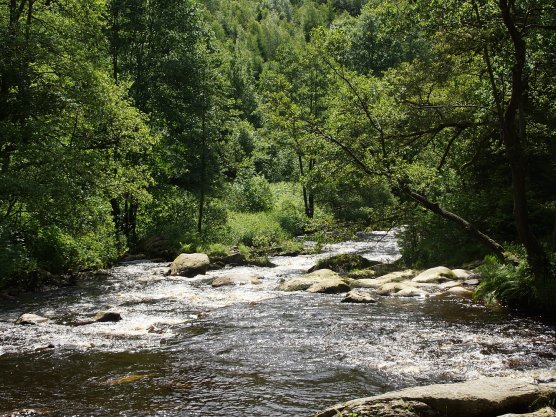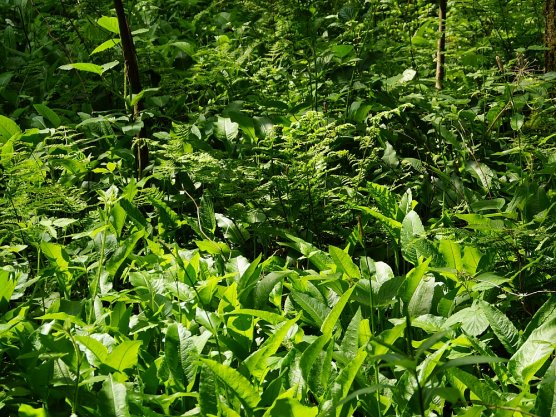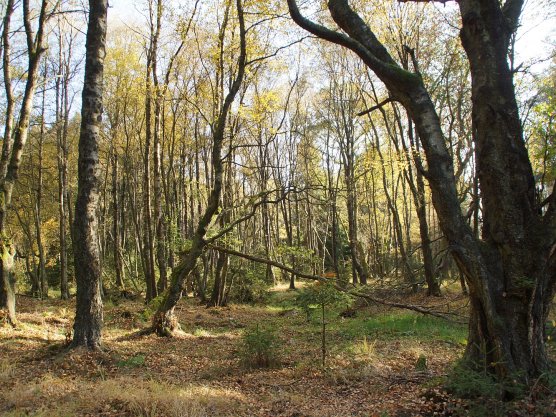
Development of a habitat network for the Violet Copper

Habitats
Wet tall herb fringes of water courses (6430)
Along creeks, nearby rivulets and moist ditches or where water seeps out of grassland, the nutrient-rich, moist tall herb meadows extend in spring and summer as a colourful band of flowers. They connect a wide variety of habitats.
With common bistort (Bistorta officinalis), meadowsweet (Filipendula ulmaria), valerian (Valeriana officinalis), wild angelica (Angelica sylvestris) and broad-leaved marsh orchid (Dacthylorhiza majalis), they provide a habitat for numerous insects with their lush growth. Not or only sporadically mown, animals and plants can develop undisturbed.
Mountain hay meadows (6520)
The nutrient-poor, sparse mountain meadows have a high proportion of herbaceous plants: This makes them an important habitat for a large number of animal species, their colourful flowering diversity enriches the landscape. Formerly a result of little intensive agriculture, they are still only mowed once or at most twice. The already from afar with its purple flower carpet recognizable wood cranesbill (Geranium sylvaticum) and the spicy smelling baldmoney (Meum athamanticum) are characteristic species
Forest of slopes, screes and ravines (9180)
High humidity and a coarse, rocky subsoil on steep slopes and in gorges are the determining characteristics of this particularly rare habitat. Sycamore (Acer pseudoplatanus), ash (Fraxinus excelsior) and wych elm (Ulmus glabra), which have become rare due to the dying of elms, immerse it in lush, moist green.
Alluvial forests with common alder and ash (91E0)
Alluvial and riparian forests are habitats that are exposed to natural changes due to flooding, erosion, deposits and groundwater fluctuations. Especially when they are light, they contribute significantly to the networking of different habitats.
Bog woodland (91D0)
This near-natural forest community grows on very acid soils under high water levels and nutrient deprivation. Downy birch (Betula pubescens), alder buckthorn (Frangula alnus), blueberry (Vaccinium myrtillus) and various types of peat moss (Sphagnum spec.) can be found regularly.


